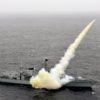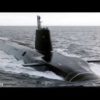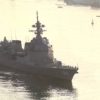Boeing F/A-18 Hornet Anatomy of the FA-18 Hornet Fighter Attack Airplane
Boeing FA-18 Hornet Anatomy of the FA-18 Hornet Fighter Attack Airplane
Subscribe to US Today!
The McDonnell Douglas (now Boeing) F/A-18 Hornet is a twin-engine supersonic, all-weather carrier-capable multirole combat jet, designed to dogfight and attack ground targets (F/A designation for Fighter/Attack). Designed by McDonnell Douglas and Northrop, the F/A-18 was derived from the latter’s YF-17 in the 1970s for use by the United States Navy and Marine Corps. The Hornet is also used by the air forces of several other nations. The U.S. Navy’s Flight Demonstration Squadron, the Blue Angels has used the Hornet since 1986.
The F/A-18 has a top speed of Mach 1.8 (1,190 mph or 1,915 km/h at 40,000 ft or 12,190 m). It can carry a wide variety of bombs and missiles, including air-to-air and air-to-ground, supplemented by the 20 mm M61 Vulcan cannon. It is powered by two General Electric F404 turbofan engines, which give the aircraft a high thrust-to-weight ratio. The F/A-18 has excellent aerodynamic characteristics, primarily attributed to its leading edge extensions (LEX). The fighter’s primary missions are fighter escort, fleet air defense, Suppression of Enemy Air Defenses (SEAD), air interdiction, close air support and aerial reconnaissance. Its versatility and reliability have proven it to be a valuable carrier asset, though it has been criticized for its lack of range and payload compared to its earlier contemporaries, such as the Grumman F-14 Tomcat in the fighter and strike fighter role, and the Grumman A-6 Intruder and LTV A-7 Corsair II in the attack role.
The F/A-18 Hornet provided the baseline design for the Boeing F/A-18E/F Super Hornet, a larger, evolutionary redesign of the F/A-18. Compared to the Hornet, the Super Hornet is larger, is heavier, and has improved range and payload. The F/A-18E/F was originally proposed as an alternative to an all-new aircraft to replace existing dedicated attack aircraft such as the A-6. The larger variant was also directed to replace the aging F-14 Tomcat, thus serving a complementary role with Hornets in the U.S. Navy, and serving a wider range of roles including refueling tanker. The Boeing EA-18G Growler electronic jamming platform was also developed from the F/A-18E/F Super Hornet.






